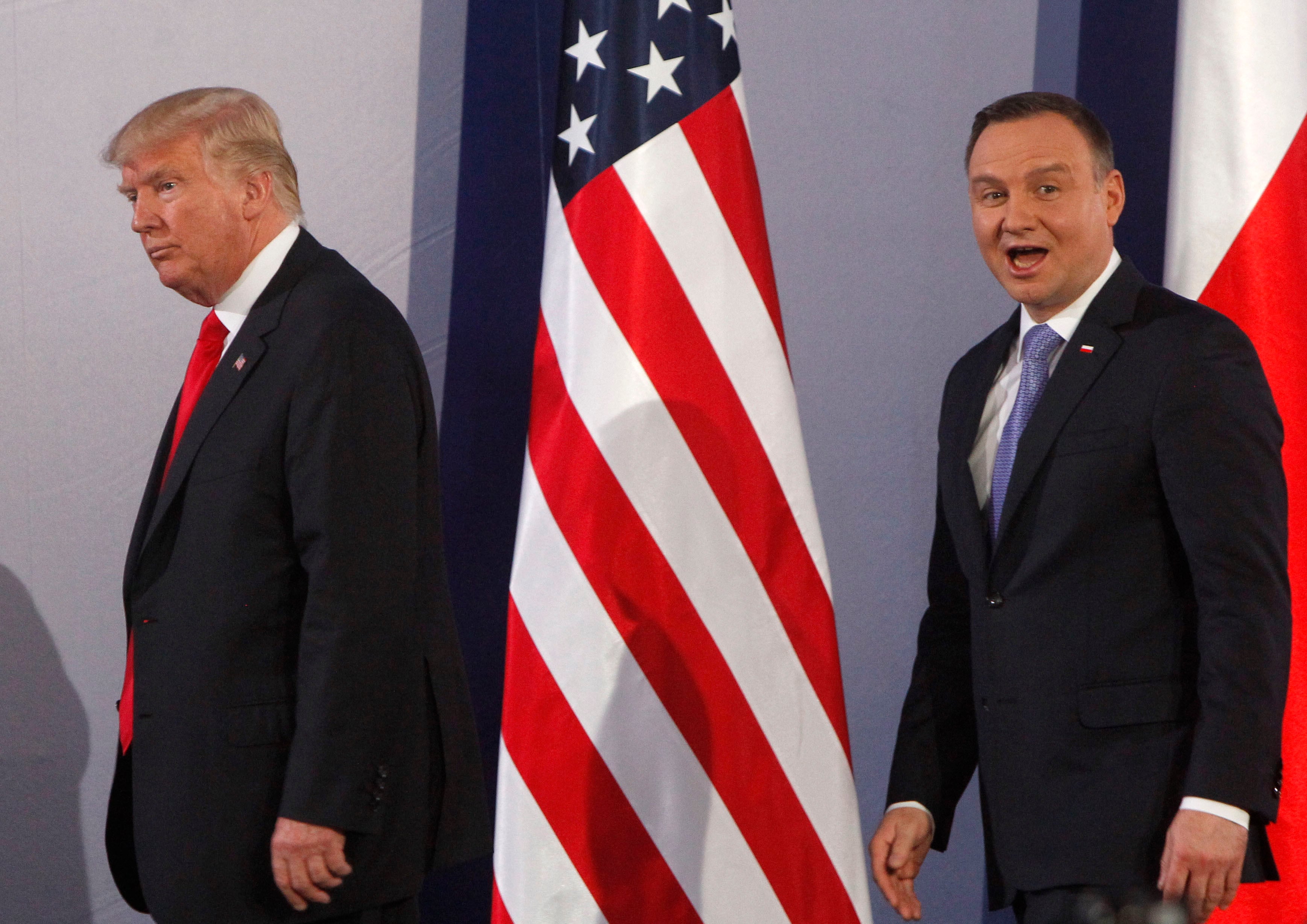WASHINGTON (AP) — The Defense Department is reviewing options to begin pulling about 10,000 troops out of Germany, as directed by President Donald Trump. But even though some may be shifted to neighboring Poland, the withdrawal will still present complex logistical challenges and will not happen fast.
While the Pentagon can move forces quickly when needed in emergencies, transferring thousands of troops to new assignments either at home or in other countries requires a litany of decisions —including many that affect families, such as locating new housing or finding new jobs for spouses and schools for children.
U.S. officials said no final decisions have been made on where those troops will go. But the issue is sure to be a prime topic as Poland's President Andrzej Duda meets with Trump on Wednesday. Under an agreement announced last year, the U.S. is planning to send about 1,000 more troops for Poland, and progress is being made, officials said, to lay the groundwork for those moves.
A senior administration official, who briefed reporters anonymously Tuesday in line with ground rules for the call, said it's premature to say when troops could be transferred out of Germany.
Trump has said he is determined to cut the number of troops in Germany from about 35,000 to 25,000. Shifting forces out of the country has long been rumored and is in line with Pentagon efforts to put more troops in the Indo-Pacific. But Trump's comments last week suggested the move is tied more directly to his anger over Germany's failure to meet NATO defense spending goals.
“Several thousand troops currently assigned to Germany may be reassigned to other countries in Europe,” Trump’s national security adviser, Robert O’Brien, said in an op-ed published Tuesday in The Wall Street Journal. “Thousands may expect to redeploy to the Indo-Pacific, where the U.S. maintains a military presence in Guam, Hawaii, Alaska and Japan, as well as deployments in locations like Australia.”
A number of Congress members have objected to Trump’s decision and some Republicans sent him a letter outlining their concerns. Pulling the troops out, said Rep. Michael McCaul, R-Texas, “may do more to harm the national security interests of the U.S. and our NATO allies and partners than it will to incentivize Germany to contribute more.”
Lt. Col. Carla Gleason, a Pentagon spokeswoman, said it “is working options with U.S. European Command consistent with the President’s directive.” She said the department’s priorities include enhancing deterrence against Russia, which is a key part of any buildup in Poland. Based on the agreement with Poland, the U.S. will add a division headquarters, a combat training center, a unmanned aircraft squadron and structure to support an Army brigade that could rotate in and out of the country.
RELATED

Mark Cancian, a senior adviser at the Center for Strategic and International Studies, said Tuesday that while the military can move quickly in emergencies, the Pentagon prefers to be careful and systematic to ensure that unit readiness isn't affected.
“They have to have facilities to move into,” he said. “They have to figure out what to do with the families. ... Where are they going to live? Are they going to build family housing?”
Most troops in Germany are assigned there, and are not on short-term deployments. Their families are with them, they have homes and their spouses may have jobs. The Pentagon will have to find them new assignments and housing, and then arrange moves.
The coronavirus outbreak has made such moves — particularly overseas transfers — far more complicated and time-consuming. For months earlier this year, the Pentagon stopped the movement of most forces, delaying thousands of routine, planned transfers. Those delays have stacked up, which could impact new decisions.
“The pandemic slows everything down,” Cancian said. “If you’re going to ship equipment, the process of preparing the equipment for shipping and getting it out the door is just going to take longer.”
Even just bringing troops back to the U.S. will require time and planning to identify their new bases, jobs and housing.
Overall, the U.S. has about 47,000 troops and civilian personnel in Germany, spread out across a number of bases, headquarters and smaller installations. Most of the 35,000 active-duty are in a handful of larger Army and Air Force bases including Ramstein Air Base, a hub in the region. There also are 2,600 National Guard and Reserve forces in Germany, and almost 12,000 civilians working for the services or the Defense Department.
Two of the military's 11 combatant commands are also based there, U.S. European Command and U.S. Africa Command. It's not certain if any cuts would impact those headquarters, but Africa Command was previously eyed for reductions.
The military's premier hospital outside the U.S., Landstuhl Regional Medical Center, is also in Germany. It has a staff of nearly 2,000 military and civilian personnel, and thousands of troops wounded in recent wars have been treated there.
The largest U.S. troop presence in Germany belongs to the Army, with more than 21,000 soldiers in more than a dozen locations. The largest concentration of soldiers is in Vilseck, where the 2nd Cavalry Regiment is based. Other large bases are in Kaiserslautern, home to a number of medical and logistical units, and Grafenwöhr, where the U.S. Army Garrison Bavaria is located.
The U.S. Air Force has nearly 13,000 troops in Germany, concentrated mainly at two large bases. The 52nd Fighter Wing, which flies F-16 fighter jets, is at Ramstein Air Base. The 86th Airlift Wing, which flies C-130 cargo transport aircraft and the smaller C-37 and C-21 passenger jets, is at Spangdalhem Air Base.
According to the Air Force, there are about 8,500 Air Force personnel at Ramstein and about 4,000 at Spangdalhem.
Associated Press writer Deb Riechmann contributed to this report.
